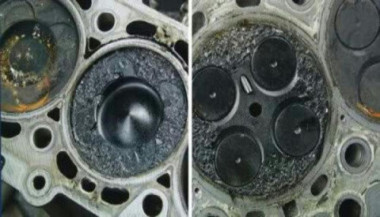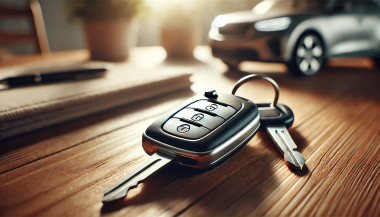Changing or removing the lock barrel on your roof rack may seem like a daunting task, but it’s actually simpler than you might think. Whether you need a replacement due to a lost key, wear and tear, or just want to swap out an old lock for a new one, following the right steps can make the process hassle-free. This guide will walk you through everything you need to know about handling a roof rack lock barrel with ease.
Why You Might Need to Change a Roof Rack Lock Barrel ?
There are several reasons why you may want to replace or remove your roof rack lock barrel:
- Lost Key: If you've misplaced the key, replacing the lock barrel is often the most practical solution.
- Upgrading the Lock: Maybe you want a more secure lock for added peace of mind.
- Routine Maintenance: Over time, lock barrels can wear down, making it harder to insert or turn the key.
- Uniformity: If you've recently changed your car key, you may want to match your roof rack lock with it.
Knowing why you’re changing the lock barrel will help you determine the steps you need to follow.
What You’ll Need
Before you start, gather these essential tools and items:
- Replacement Lock Barrel: Ensure it’s compatible with your roof rack model.
- Master Key or Removal Key: Often required to remove the old lock barrel.
- New Key: The key that corresponds to the replacement lock barrel.
- Flathead Screwdriver: To gently pry and release certain parts if needed.
Step-by-Step Guide to Removing a Roof Rack Lock Barrel
Removing a lock barrel from your roof rack doesn’t require extensive mechanical skills. Just follow these straightforward steps:
1. Locate the Lock Barrel
The lock barrel is usually situated in the center or side of the roof rack. Look for the small lock with the keyhole, as this is where you'll be inserting the master or removal key.
2. Insert the Master Key or Removal Key
If you have a master or removal key, insert it into the lock. This is often a universal key provided by the lock manufacturer specifically for removing lock barrels. Once it’s inserted, turn the key slightly to unlock the barrel.
Tip: If you don’t have a removal key, contact a professional or see if you can order one specifically for your model.
3. Pull the Lock Barrel Out
With the removal key still in place, gently pull the lock barrel out. If it’s resistant, try wiggling it slightly while pulling. Avoid forcing it, as this could damage the lock or roof rack. In some cases, you may need a flathead screwdriver to help pry it out, but be careful not to scratch the surrounding area.
4. Check the Casing
After removing the lock barrel, inspect the casing where the barrel was installed. Make sure it’s clean and free of debris. Any dirt or rust could interfere with the new lock barrel, so it’s a good idea to clean this area before proceeding.
Installing the New Lock Barrel
Once the old barrel is removed, you’re ready to install the new one. Here’s how:
1. Align the New Lock Barrel
Take your new lock barrel and align it with the casing where the old one was. Most barrels are designed to fit in only one direction, so make sure you align it properly to avoid jamming.
2. Insert the New Barrel
Push the new lock barrel into the casing until it clicks into place. This might require a bit of pressure, but it should fit snugly without needing excessive force.
3. Test the New Key
After installing the new lock barrel, insert the new key and turn it to ensure it’s working smoothly. The key should turn easily and lock securely. This step verifies that the new lock is properly aligned and functional.
Common Challenges and Solutions
While changing a roof rack lock barrel is generally straightforward, you might encounter some challenges. Here’s how to troubleshoot common issues:
- Stuck Barrel: If the old barrel is stuck, apply a lubricant like WD-40 around the lock to help loosen it.
- No Removal Key: If you don’t have a master or removal key, consider reaching out to a locksmith or checking if the manufacturer offers a replacement.
- Barrel Won’t Fit: Ensure you’ve purchased a compatible lock barrel. Even slight differences in design can prevent it from fitting properly.
Tips for Maintaining Your Roof Rack Lock
To keep your new lock barrel in good condition and prevent the need for frequent replacements, consider these maintenance tips:
- Regular Cleaning: Dirt and grime can accumulate inside the lock over time, making it harder to operate. Clean the lock regularly to prevent this.
- Use Lubricant: Apply a small amount of lubricant inside the lock barrel periodically to keep the key turning smoothly.
- Protect from Rust: If your roof rack is exposed to rain and humidity, use a protective cover or shield to keep moisture out of the lock barrel.
- Check Key Fit: Avoid using a damaged or bent key, as this can wear out the lock barrel more quickly.
When to Seek Professional Help
In some cases, removing or replacing a roof rack lock barrel might require assistance from a professional:
- Lost or Damaged Keys: If both your main key and master key are lost or damaged, a professional can help retrieve or replace the lock barrel.
- Damaged Lock Mechanism: If the lock itself is damaged or jammed, forcing it can make things worse. A professional locksmith can safely remove and replace it.
Replacing or removing a roof rack lock barrel is an affordable and manageable task for most car owners. By following the right steps and keeping up with regular maintenance, you can ensure your roof rack lock stays functional and secure. Whether you’re upgrading for security or replacing a worn-out lock, a new lock barrel can make all the difference in keeping your roof rack safe.
Effortless Key Replacement for a Variety of Locks
Order 2x Union Keys FT Series, custom-cut to your original key code, for a hassle-free replacement. Compatible with a range of locks, including those from Aston Martin, Jaguar, Land Rover, and more, these keys are perfect for classic cars, caravans, petrol caps, roof racks, and truck canopies. Simply find your lock code (e.g., FT101-FT360) on the lock face and enjoy fast delivery of high-quality spare keys.

_1736346704.jpg)
_1736342764.jpg)

 (1)_1736345323.jpg)
